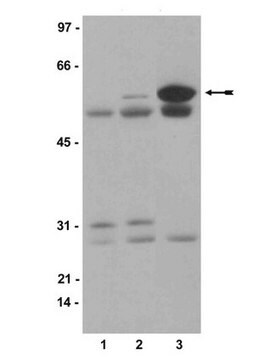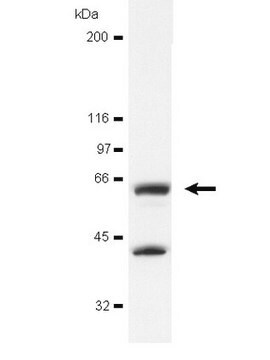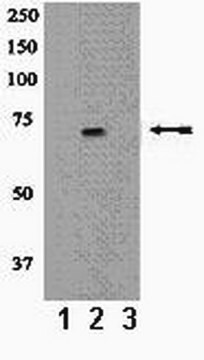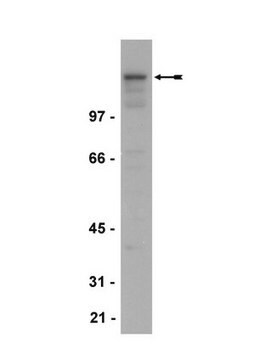06-600
Anti-NR2B Antibody
Upstate®, from rabbit
Synonim(y):
N-methyl D-aspartate receptor subtype 2B, N-methyl-D-aspartate receptor subunit 2B, N-methyl-D-aspartate receptor subunit 3, glutamate receptor subunit epsilon-2, glutamate receptor, ionotropic, N-methyl D-aspartate 2B
About This Item
Polecane produkty
pochodzenie biologiczne
rabbit
Poziom jakości
forma przeciwciała
purified immunoglobulin
rodzaj przeciwciała
primary antibodies
klon
polyclonal
reaktywność gatunkowa
mouse
reaktywność gatunkowa (przewidywana na podstawie homologii)
monkey (based on 100% sequence homology), canine (based on 100% sequence homology), bovine (based on 100% sequence homology), rat (based on 100% sequence homology), human (based on 100% sequence homology), chimpanzee (based on 100% sequence homology)
producent / nazwa handlowa
Upstate®
metody
immunocytochemistry: suitable
immunoprecipitation (IP): suitable
western blot: suitable
izotyp
IgG
numer dostępu NCBI
numer dostępu UniProt
Warunki transportu
dry ice
docelowa modyfikacja potranslacyjna
unmodified
informacje o genach
bovine ... Grin2B(537804)
chimpanzee ... Grin2B(473373)
dog ... Grin2B(494009)
human ... GRIN2B(2904)
mouse ... Grin2B(14812)
rat ... Grin2B(24410)
rhesus monkey ... Grin2B(698571)
Opis ogólny
Specyficzność
Immunogen
Zastosowanie
Neuroscience
Neurotransmitters & Receptors
Neurodegenerative Diseases
Jakość
Western Blot Analysis:
0.5-2 μg/mL of this lot of antibody detected NR2B (~180 kDa) in rat brain microsomal preparation (Catalog # 12-144).
Opis wartości docelowych
Postać fizyczna
Przechowywanie i stabilność
Aliquot to avoid freezing and thawing. For maximum recovery of the product, centrifuge the original vial after thawing and prior to removing the cap.
Handling Recommendations: Upon receipt, and prior to removing the cap, centrifuge the vial and gently mix the solution. Aliquot into microcentrifuge tubes and store at -20°C. Avoid repeated freeze/thaw cycles, which may damage IgG and affect product performance.
Komentarz do analizy
Mouse brain tissue
Informacje prawne
Oświadczenie o zrzeczeniu się odpowiedzialności
Not finding the right product?
Try our Narzędzie selektora produktów.
Kod klasy składowania
10 - Combustible liquids
Klasa zagrożenia wodnego (WGK)
WGK 1
Certyfikaty analizy (CoA)
Poszukaj Certyfikaty analizy (CoA), wpisując numer partii/serii produktów. Numery serii i partii można znaleźć na etykiecie produktu po słowach „seria” lub „partia”.
Masz już ten produkt?
Dokumenty związane z niedawno zakupionymi produktami zostały zamieszczone w Bibliotece dokumentów.
Nasz zespół naukowców ma doświadczenie we wszystkich obszarach badań, w tym w naukach przyrodniczych, materiałoznawstwie, syntezie chemicznej, chromatografii, analityce i wielu innych dziedzinach.
Skontaktuj się z zespołem ds. pomocy technicznej








